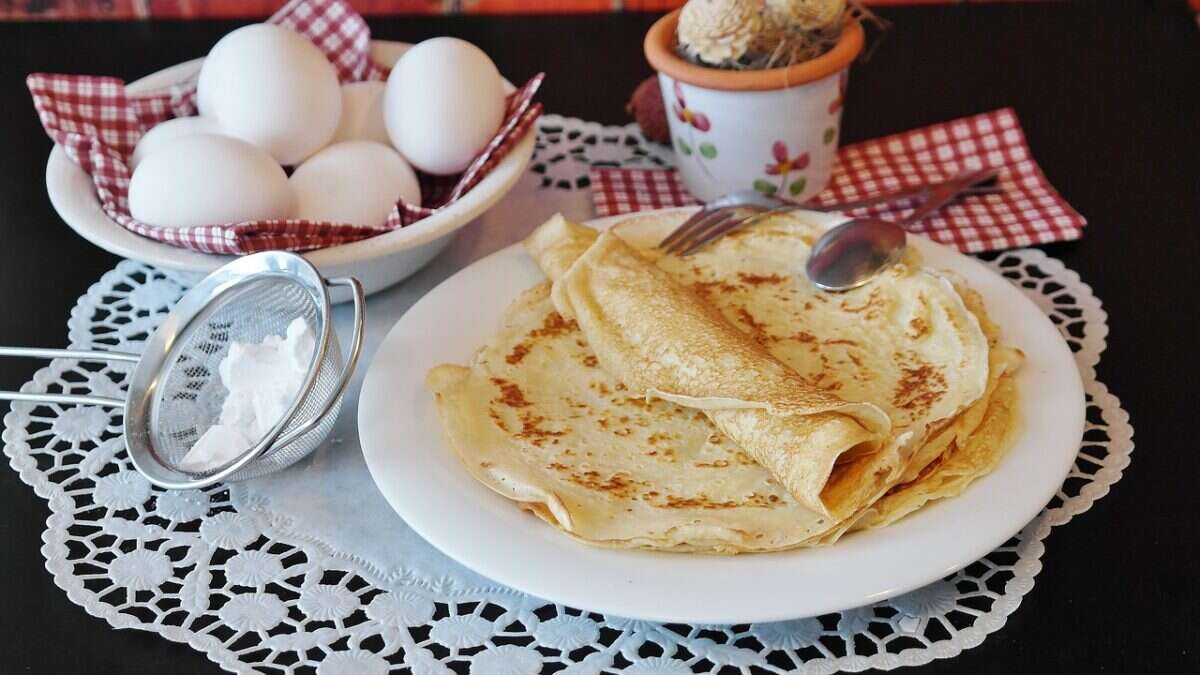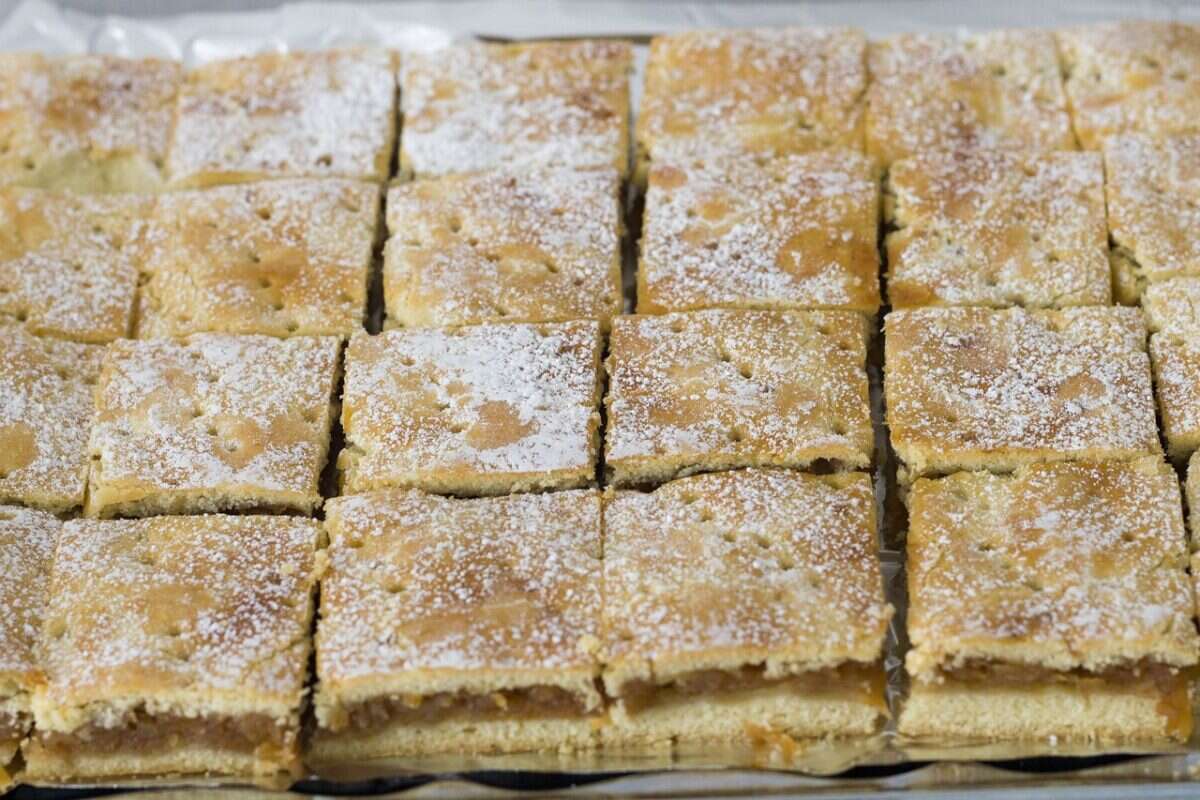 rita in from Pixabay"/>
rita in from Pixabay"/>A pancake batter recipe that always works! To prepare these pancakes, it is necessary to prepare the simplest ingredients, which surely every one of us has in the kitchen: flour, eggs, oil, milk, butter, salt, sugar.
Did you know that a pancake batter recipe is very popular in England? By the way, it's in England traditional holiday Pancake Day (Pancake Day or Shrove Tuesday, the so-called Shrove Tuesday).
The pancake batter recipe is simple, inexpensive and very quick to prepare. In England, on Pancake Day, pancakes are eaten sprinkled with sugar and freshly squeezed lemon juice.
Batter for pancakes, ingredients:
- 225 grams of flour
- 1 pinch of salt
- 2 eggs
- 400-450 ml of milk
- 2 tablespoons butter (melted)
- a little butter, for baking
Dough for pancakes, preparation:
- Sift the flour into a large mixing bowl. Make a large well in the middle and add the eggs. Beat with a mixer until the mass is even.
- Add half the milk and melted butter and continue mixing. When the mass becomes equal, add the remaining amount of milk.
- Leave the mass to stand for 15 minutes.
- Heat a pan and melt some butter.
- Pour the pancake batter evenly into the pan. Bake for a few minutes and turn carefully.
- Place the finished pancakes on a heated plate and cover with a cloth.
By the way, a pancake (German Palatschinken, French Crêpe, English Palatschinke) is a delicacy fried in oil or without oil. Pancakes are round, can be thick or thin, and are made from a mixture of flour and milk or water, and 1-6 eggs. Pancake is probably the oldest form of bread and is known all over the planet, prepared in different ways.
After frying, the pancake is coated with a sweet or savory filling. Of the sweets, jam, jam, various industrial creams, honey or the like are most often used. In addition, nuts, ground biscuits, and fruit can be added. From salty fillings, cheese, cream, various ready-made dishes, such as Russian salad, or the like are used. After coating, the pancake is rolled into a cylindrical shape, or rolled into a triangular shape. If desired, other accessories can be placed on the already wrapped pancake.
Sweet as well as savory filled pancakes can be stacked in a baking tray, filled with cream and egg filling, and baked in the oven. Filled pancakes can be fried in a mixture of cornflakes, sesame seeds, walnuts, etc.
Etymologically, the word "pancake" is derived from the Latin word "placenta" which means "cake".
There are different types of pancakes, depending on the cuisine in which they were made: American, English, Greek, French, etc. Each cuisine has a unique preparation method and recipe.
According to some historical sources, the Ancient Greeks were the first to use it in their diet. They were called Itria and were served during breaks of theater performances as a kind of snack. The topping was made of honey and everything was sprinkled with sesame seeds.
Around the theater there was always a stand where these pancakes would be baked. Spectators would buy and eat this delicacy during breaks between acts.
The Romans took over the recipe and called them simply "alita dolcia" - "something sweet".
Pancakes have been entertaining families since ancient times. After Ancient Rome, pancakes appeared in Romania. Thus the Roman placenta gave way to placinti in the Romanian language. But if the name is very close, the placenta is actually a distant relative of pancakes.
Indeed, it is a traditional Romanian, Moldovan and Ukrainian pastry that resembles a small square-shaped brioche or sometimes in the form of large round pancakes. In the past, confectioners in ancient Rome made large pancakes (placenta) that were cut into squares to be sold on market days. This square shape can be found in Romania to this day.
There are also several varieties of placinta in Romania. The most common variety is certainly the sweet version filled with apples. This version is called "placinta cu mere". There is a savory version (known as branzoaice). This version is filled with Romanian curd.
Clatites correspond to pancakes in Romania, because the recipe is identical.
Then it was Hungary's turn and pancakes appeared under the name palacsinta. The Czech Republic then transformed the term palacsinta into pancake. Finally, the pancakes continued their journey to Germany and Austria. Palatschinke (plural: Palatschinken) is used to refer to these thin pancakes. Palatschinken is traditionally served rolled and garnished with apricot, strawberry or plum jam and sprinkled with sugar.
Also, the term pancake is the most commonly used name in the Slavic languages of the West and South.
In Albania, you will find these delicious pancakes under the name pancake.
In Bosnia, Bulgaria, Croatia, Serbia, Slovenia and Montenegro we find a recipe for thin pancakes.
Read more:
The Recipes and Kuvar online portal is ranked among the TOP 50 websites in Serbia!
Don't miss a recipe - Recipes and cookbook online on Facebook. Stay tuned, follow the Recipes and Cookbook twitter notifications!






